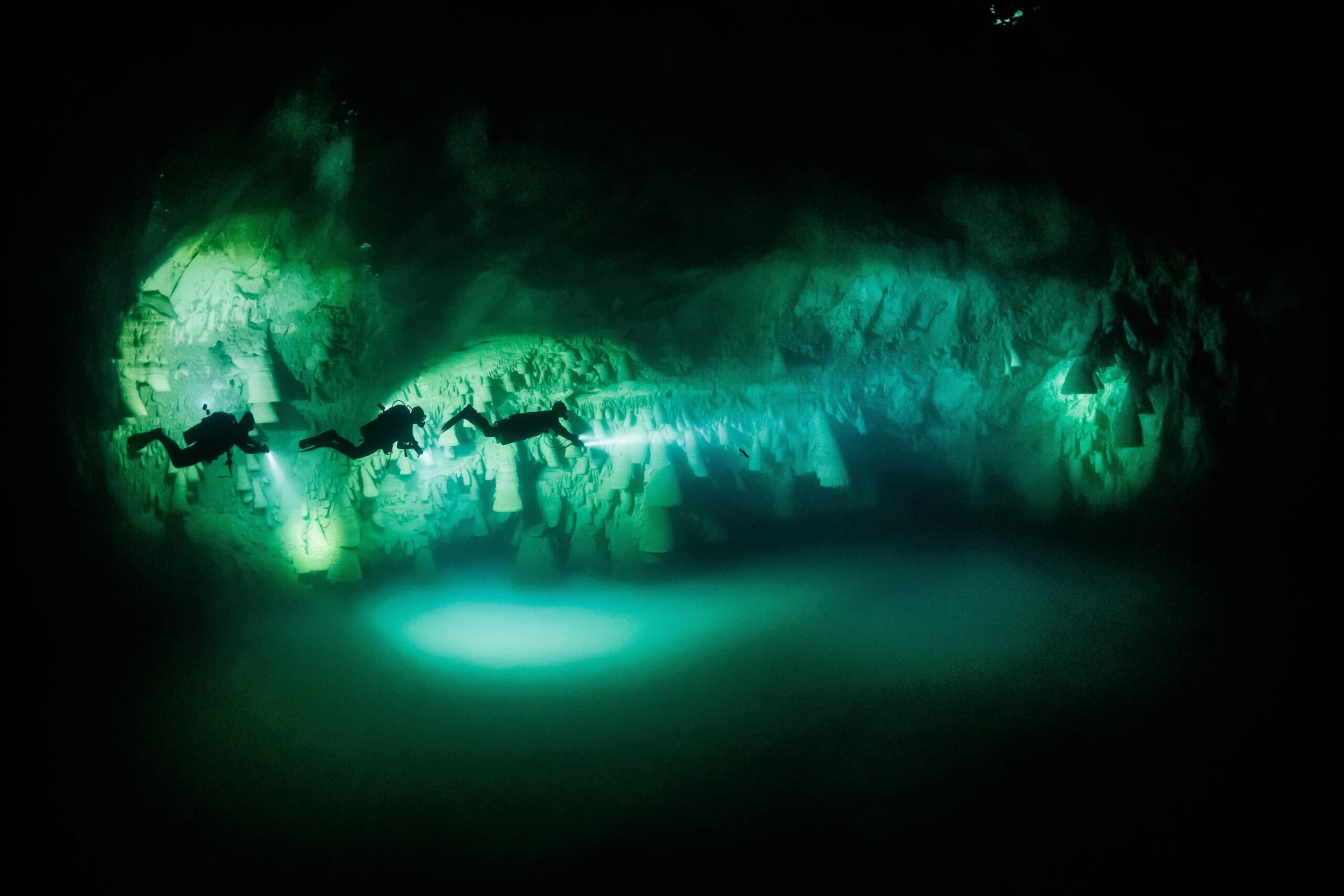
Cenote Diving Safety Tips: Navigating Nature’s Subterranean Marvels
Diving into a cenote feels like stepping into another realm, where time stands still and nature’s architecture unfolds in breathtaking detail.
However, just like exploring a mysterious ancient castle filled with hidden rooms and secret passages, diving in cenotes requires careful preparation and respect for the environment. Here are essential safety tips to ensure your cenote diving adventure is as safe as it is breathtaking.
- Certification is Key: Don’t Dive Out of Your Depth
Just as you wouldn’t attempt to pilot a plane without proper training, diving in cenotes should only be done if you’re appropriately certified. Generally speaking, an Open Water certification is enough to dive the easiest and shallower cenotes. While an advanced certification is required for the deeper and most tricky ones.
We have many dives for all levels however, an into to cave or a full cave diving certification becomes crucial if you wish to venture beyond the natural light of the cavern zone. These specialised courses equip you with skills in navigation, buoyancy control and handling potential emergencies in overhead environments.
Always dive within the limits of your training and experience – there’s no room for “winging it” in the delicate and challenging environments of the cenotes. As a non cave diver we will stay in the cavern zone, always within 60m/200ft of an exit and always in sight of the sunlight.
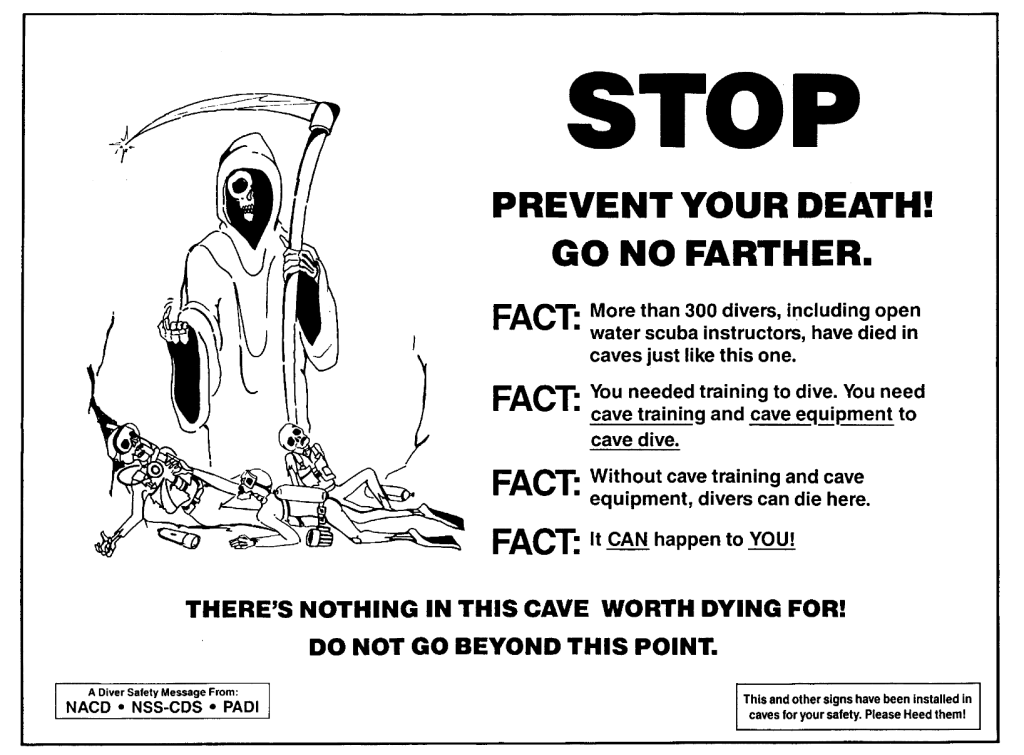
- Plan Your Dive and Dive Your Plan: Strategy is Everything
Before diving into the crystalline waters of a cenote, do your homework. This is like being a scout preparing for a wilderness adventure – you wouldn’t hike into unknown territory without a map and some basic knowledge about the area.
Our experienced guides are here to help give you a detailed orientation to the new environment, make sure you pay full attention to the pre-dive safety briefing. You will learn about new hazards and how to avoid them, new communication techniques and emergency procedures.
Understand its depths and any unique hazards. Every cenote is different, some are wide and full of sunlight, others feature narrower passageways and require advanced diving skills. Knowing these details helps you prepare adequately and set realistic expectations. When you book with us we will talk through your experience diving and see which will be best for you. We will also test out the new skills and communication from the briefing in easier cenotes before moving on to harder environments.
As a chess player strategizes each move, so should a diver plan their dive. Know your entry and exit points, establish maximum depth and bottom time and stick to the plan. Changes in the environment or unexpected challenges can occur, so having a well thought out plan and a contingency strategy helps manage these situations effectively.
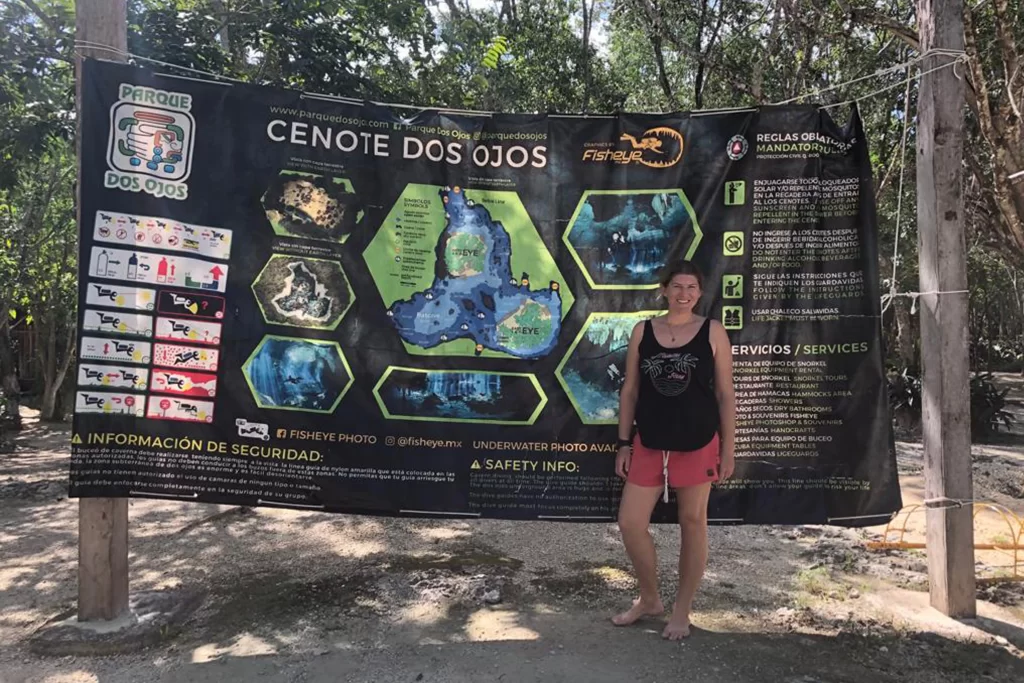
- Gear Up Correctly: Suit Up Like a Superhero
In superhero movies, characters don their suits meticulously because each piece serves a purpose. Similarly, cenote diving requires specific gear that might differ slightly from typical ocean diving equipment.
A good dive light is essential – not just one, but ideally two. We will always have backup lights for all the divers in the group. If you are taking a cave course a whole new set of gear will be introduced.
Because cenotes are overhead environments, a well-fitting and reliable equipment is vital. Ensure all equipment is checked and in top condition before you dive (brush up on your buddy check). The quick exit to the surface is no longer available to you.
For this experience we will get you to set up and check all your own equipment (supervised by your instructor of course) to ensue you are fully familiar with it.
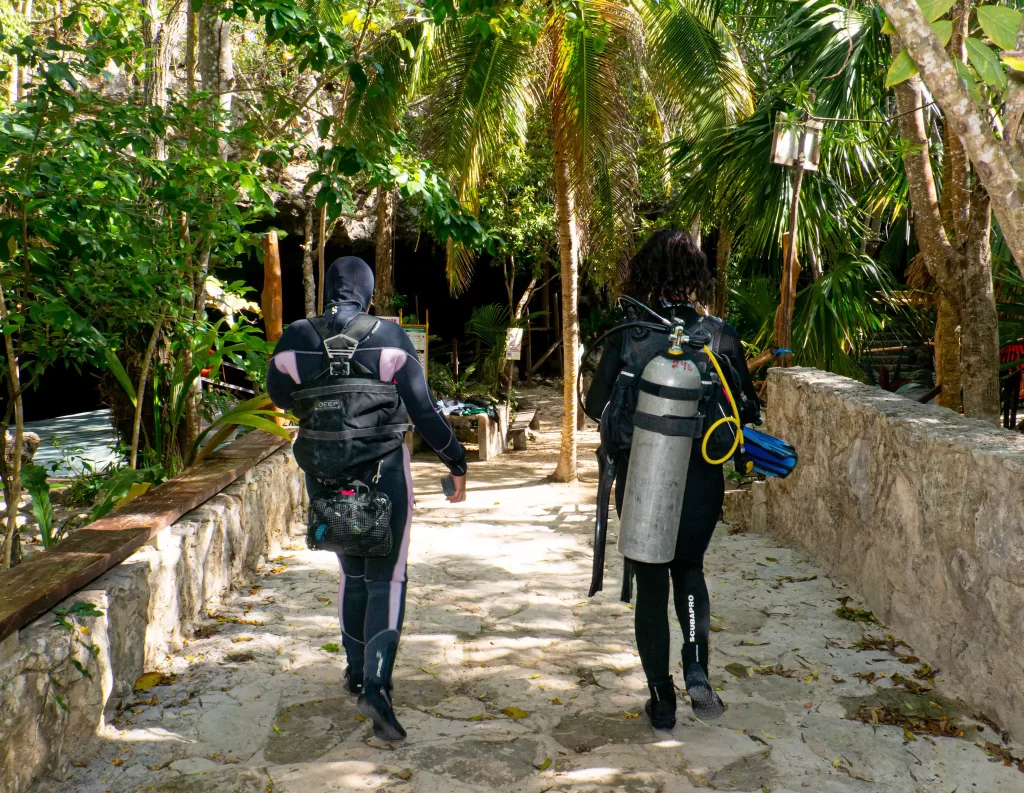
- Follow the Leader: Dive Guides Are Your ‘Tour Guides’
Think of your dive guide as a tour guide in a historic city. Just as they would know the safest and most interesting routes through ancient streets, your dive guide knows the best paths through underwater caves and tunnels.
They are familiar with the cenote’s layout and any seasonal changes that might affect diving conditions.
Stick close to your guide, respect their instructions and never wander off on your own. The guide’s experience and knowledge are invaluable, particularly in an environment as unique as a cenote.
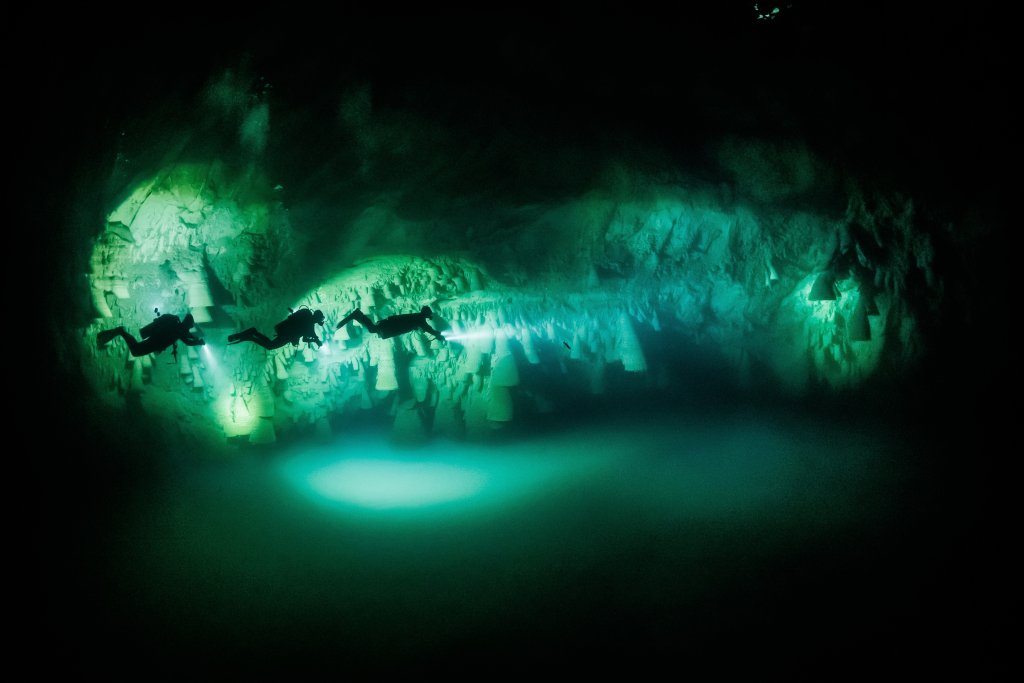
- Mind Your Surroundings: Respect the Environment
Cenotes are not just beautiful, they are also fragile ecosystems and culturally significant for the local communities. Treat them with the same respect as you would with a sacred site or a revered monument.
Avoid touching the formations, which are thousands of years old and can be damaged by the slightest contact. Taking fossils and stalagmites is an arrestable offence in the area.
Be mindful of your fin movements to prevent stirring up sediment, which can reduce visibility for everyone. Any marks you leave in the sediment will stay looking ugly for many years as the water movement is so slow.
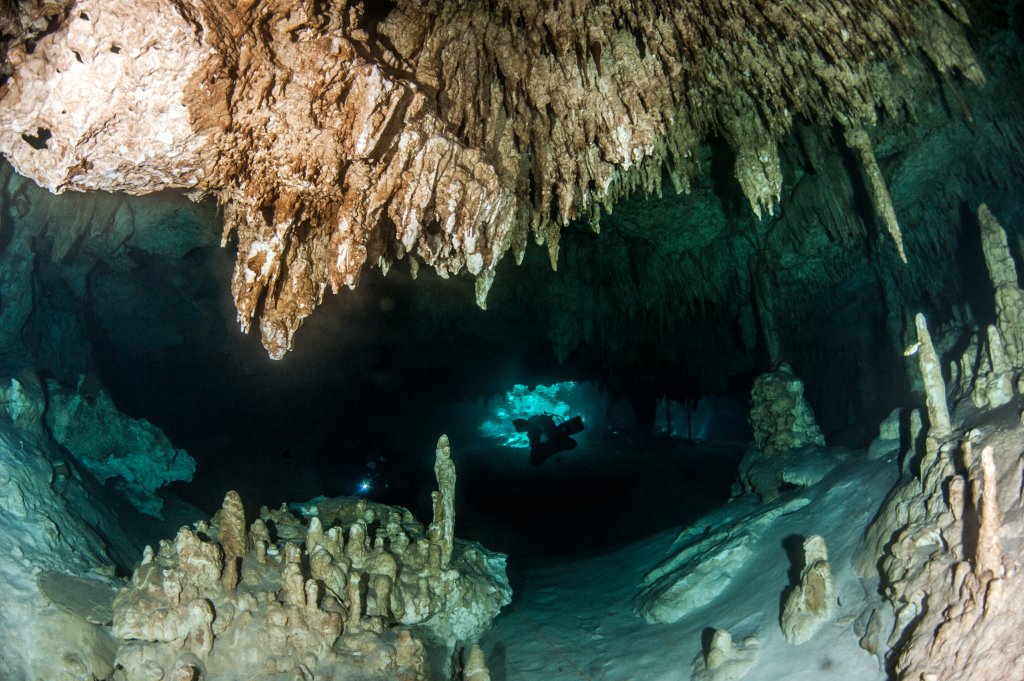
- Be Environmentally Conscious: Leave Only Bubbles
The eco-footprint of divers can be significant. It is forbidden to use sunscreen, insect repellent or other harmful (to both the formation and the region’s water source) chemicals. The motto “take only pictures, leave only bubbles” is especially pertinent in cenote diving, many requiring you to take a shower before you enter, to ensure all chemicals are removed. The preservation of these natural resources depends on each diver’s commitment to conservation.
In Conclusion: Dive Safe, Dive Smart
Cenote diving offers a portal into an underwater world that few get to see. By following these safety tips, you can ensure that your adventure into these labyrinths is not only memorable but also safe. Safety in cenote diving is about preparation, respect and mindfulness – qualities that turn good divers into great ones.


